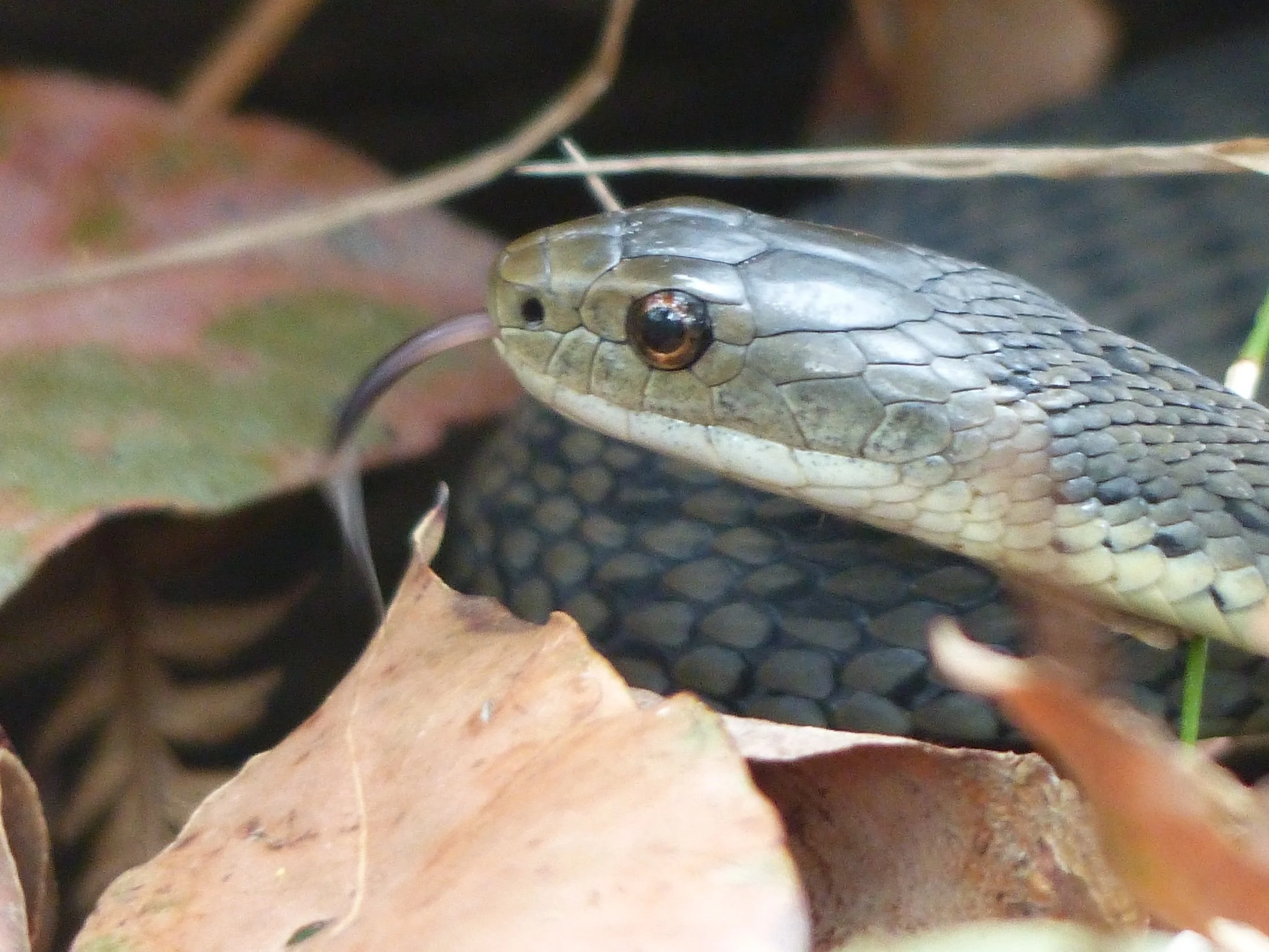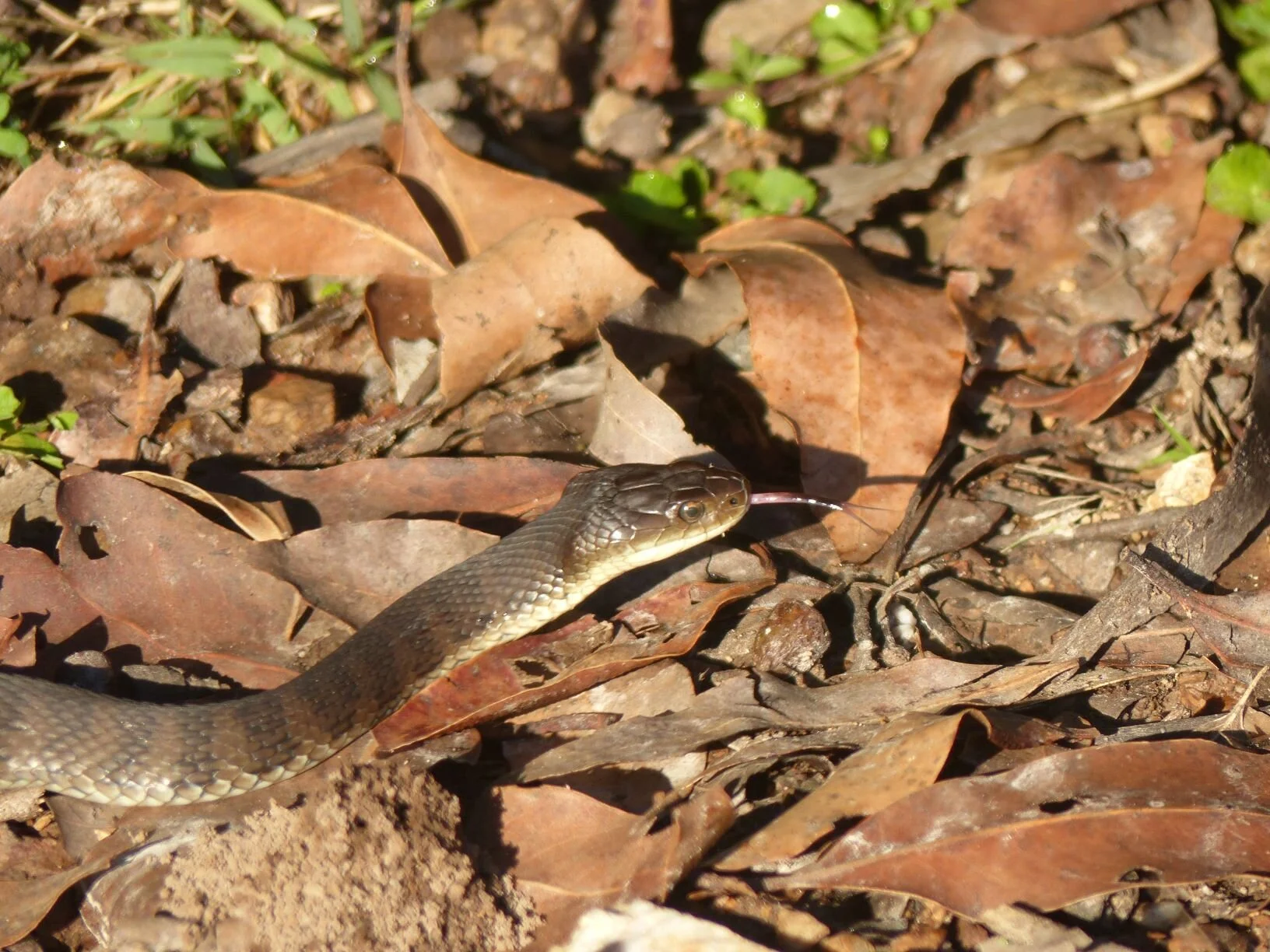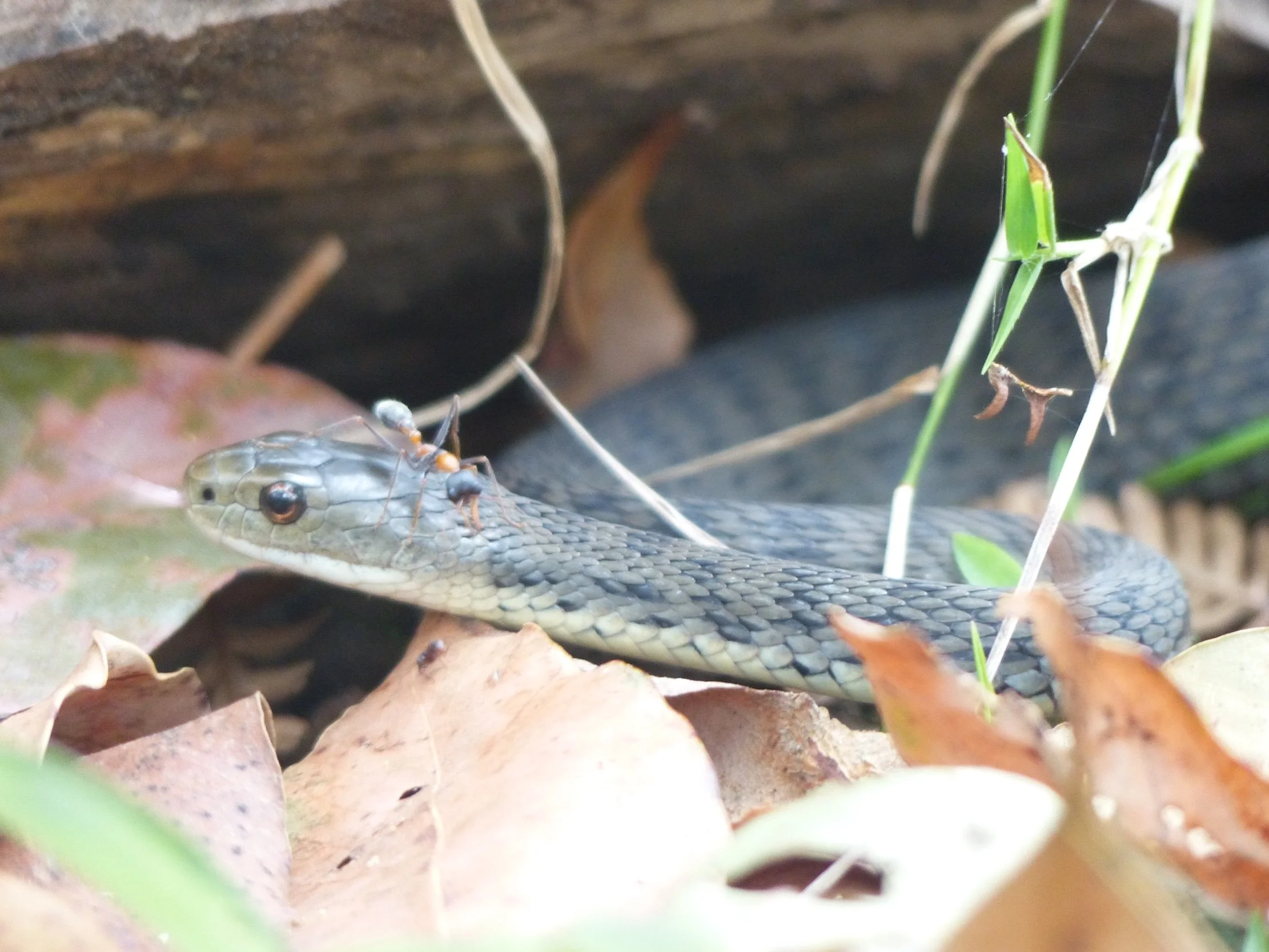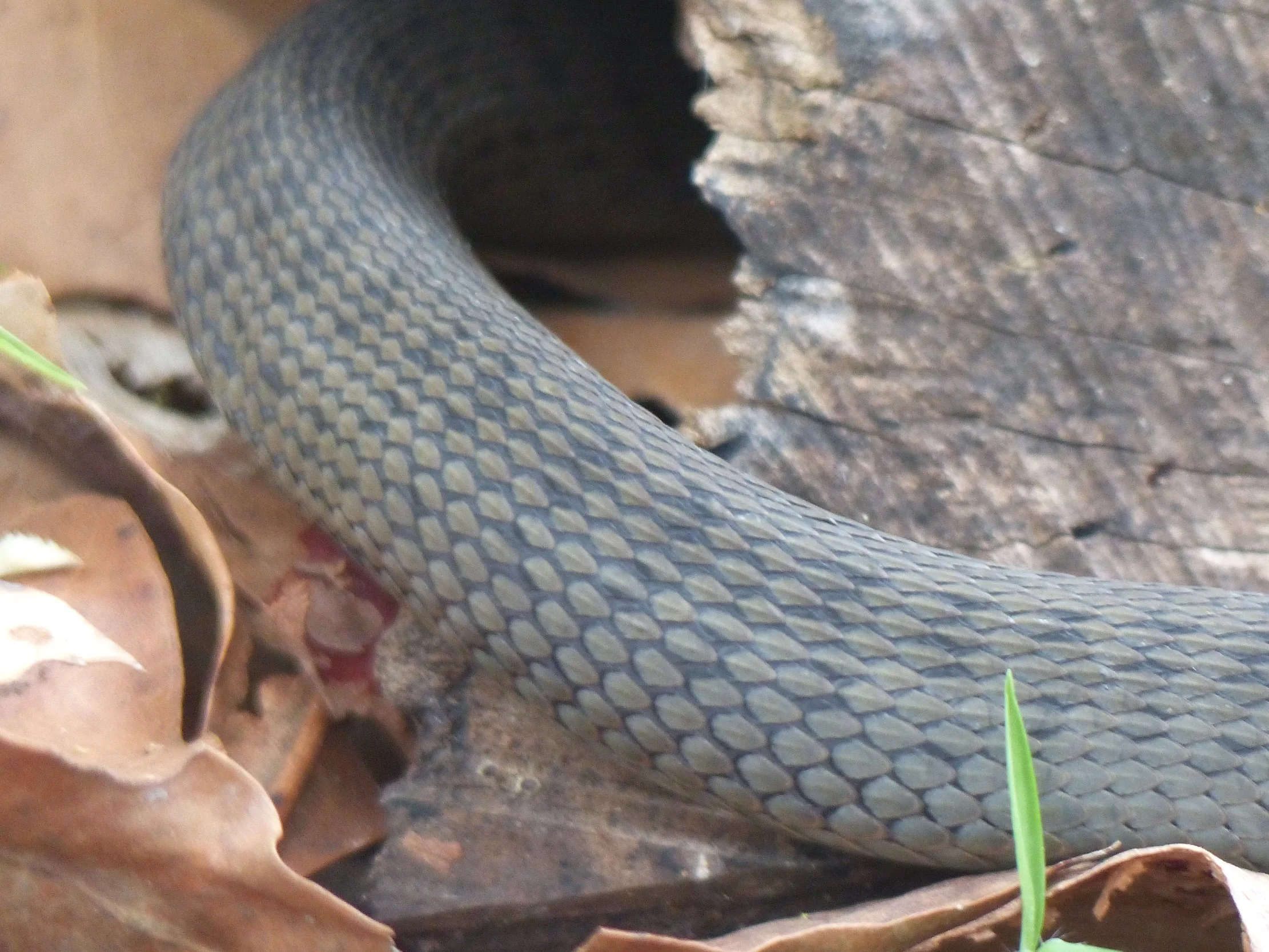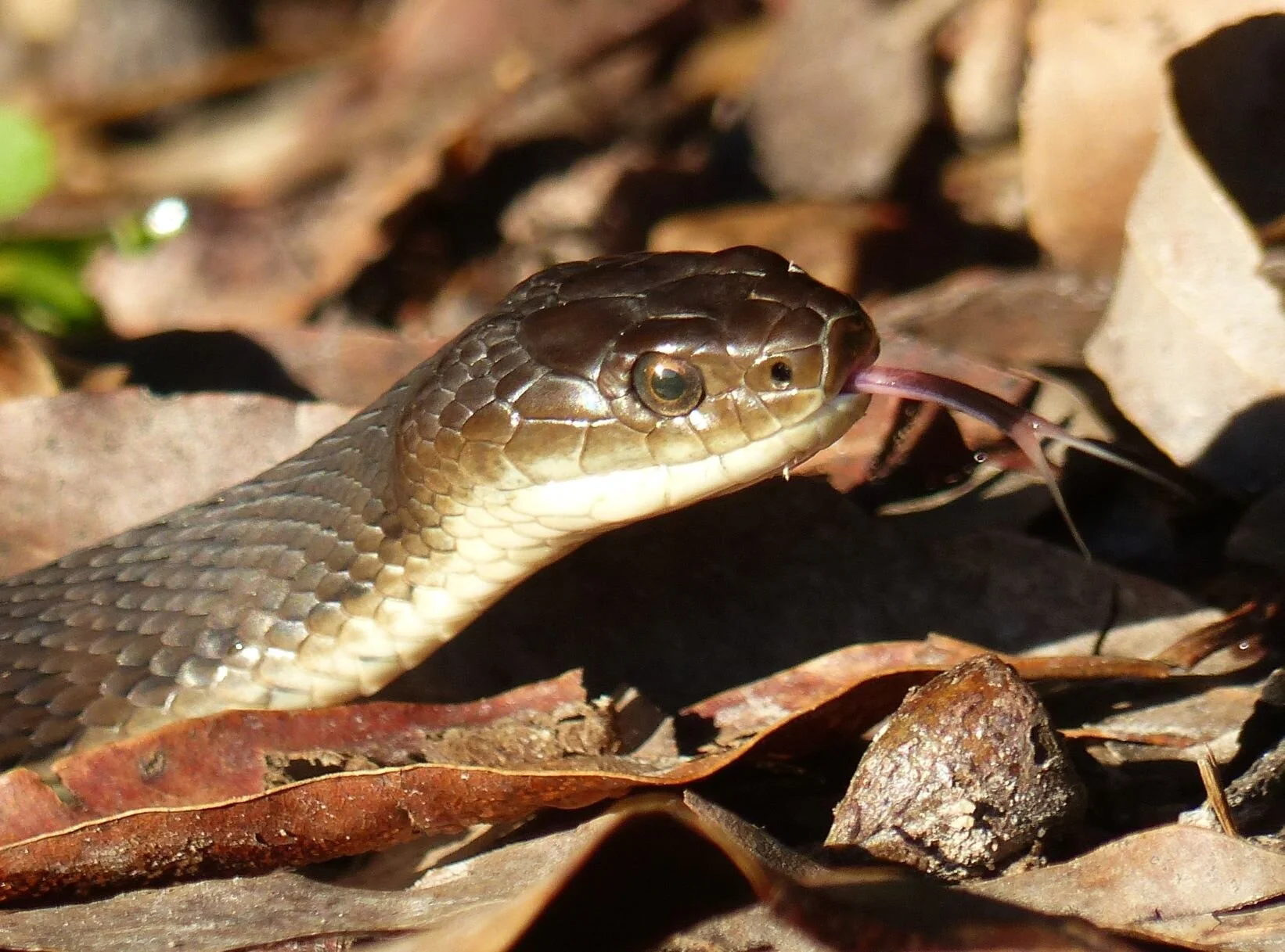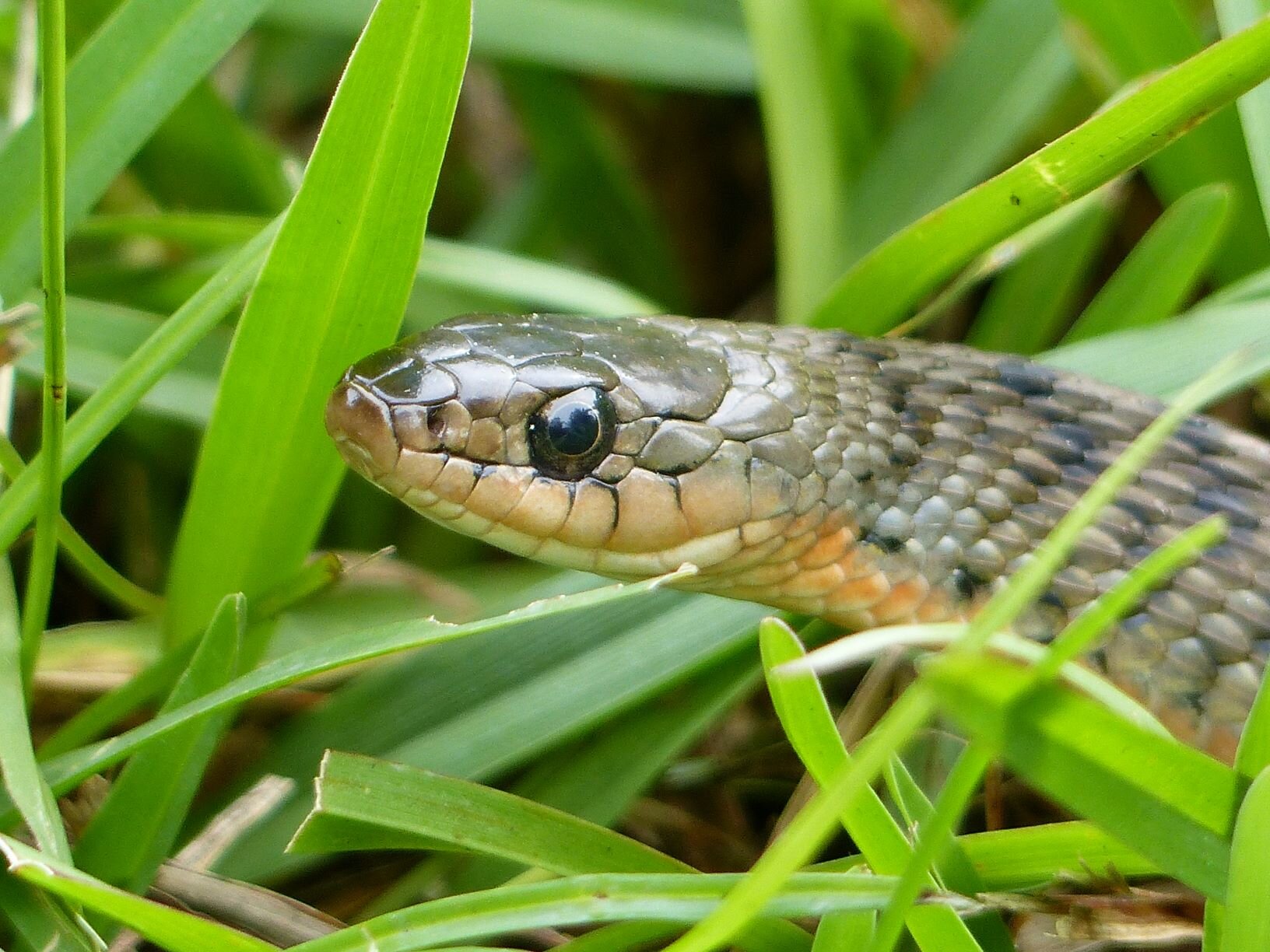Rough-scaled Snake (Tropidechis carinatus)
Other common names: Clarence River Snake
Toxicity: Highly venomous.
Description: Robust body with distinct head. The head and body scales are non-glossy ranging in colour from olive-green to grey to brown. The dorsal scales are strongly keeled and will often have dark blotches or banding. The ventral (underside) is cream coloured, often with darker blotches. Grows to around 1 metre in length.
The size, colour and keeling of scales is similar in appearance to the Keelback Snake. The Keelback will have a more uniform body colour, a mouth which rises slightly in a smile, a loreal scale and dark markings between the scales on the top lip. Under the tail, the Keelback has two rows of divided scales where the Rough-scaled Snake has one row of undivided scales.
The Rough-scaled Snake is a member of the front fanged venomous Elapid family.
General habits: The Rough-scaled Snake is distributed from the central coast of NSW north to around Hervey Bay. A separate population exists in north-eastern Queensland. It is mostly active at night but may be active during the day. The Rough-scaled snake is a strong climber and can be encountered in trees and vegetation several metres off the ground, or under fallen timber or cracks in the ground. Rough-scaled Snakes favour moist habitats such as rain-forest or areas adjacent to watercourses and swamps.
Diet: Small mammals and frogs, occasionally lizards and small birds.
Locally: Sightings are rare in the Tweed. The Rough-scaled Snake will move quickly away if disturbed but will defend itself vigorously if threatened. Because of it’s similarity in appearance to the Keelback and shared habitat, both snakes should be treated as a Rough-scaled Snake until proven otherwise.
Reproduction: Rough-scaled Snakes give birth to live young every second year, averaging ten per litter.
No respect shown to this Rough-scaled Snake from a jumping ant.
The longitudinal ridges and colouring on this Rough-scaled snake are very similar to the Keelback.
Rough-scaled Snake. This individual was found sunning itself on the top of a bush 2 metres off the ground. No loreal scale, straight mouth and no dark markings between the scales on the upper lip.
Keelback Snake for comparison. Loreal scale present, mouth upturned in ‘smile’ and dark markings between the scales on the upper lip.
